Overview: There are two themes today. First, there has been a modest bout of profit-taking on Chinese stocks (and yuan) after last week’s surge. Second, the ahead of the five G10 central bank meeting this week a series of market-sensitive economic reports, a consolidative tone is seen in most of the capital markets. Most of the large bourses in the Asia Pacific region fell, led by a 2.2% loss in Hong Kong and 3% loss in its index of mainland shares. Europe’s Stoxx 600 is giving back half of the pre-weekend 0.85% gain, while US futures are posting minor upticks after their slide at the end of last week. Benchmark 10-year bond yield are mostly 2-4 bp lower in Europe though the Gilt yields is off seven bp. Near 3.52%, the 10-year Treasury yield is off five basis points. It rose nine basis points last week. The US dollar is mostly softer, but the yen, Australian and Canadian dollars are struggling. Emerging market currencies are mixed. The South African rand, Philippine peso, and South Korean won are the underperformers, while the central European currencies and Mexican peso enjoy a modicum of strength. Gold is softer and is hovering around its 200-day moving average ($1791). January WTI is pinned near $70. The cold spell is seeing US gas jumped 11%, the most since the end of October and the fourth consecutive daily gain. Europe’s benchmark is moving in the opposite direction. It is off about 1.8%, its third consecutive decline. After rallying nearly 5% in the past two session, iron ore nearly 1.8% today. March copper is giving back last week’s 0.7% gain in full. On the other hand, March wheat has erased last Friday’s 1.6% decline.
Asia Pacific
The capital market is so much larger than the market for physical commodities that it can confuse observers. Last week, with the reserve data, China reported it bought 32 tons of gold. It sounds likely boat load, but the dollar value, we quickly estimated was around $1.65 bln. Does this really count as diversification out of the dollar, as some suggested, when the US Treasury data shows the PBOC owning $933.6 bln of US Treasuries at the end of September. Then, at the end of last week, after China's Xi visited Saudi Arabia the prospect of oil sales in yuan captured the imagination of some market participants as it does occasionally. Some trumpet this as the end of the so-called petrodollar. Many observers, in a rush to declare the dollar era over, thought when China launched domestic yuan oil contract that would signal the end of the greenback's reign. It did not. China is the biggest buyer of Saudi oil. On one level, it makes sense that it caters to its biggest buyer. Last year, China bought around $44 bln of oil from the Saudi's according to reports, which is less than $1 bln a week. If it were denominated in yuan, would it have impacted the dollar? Most likely not. It is relatively modest amount of money in the capital markets and for the dollar in particular. Consider that later today, the US Treasury will a sell a total of $171 bln of bills and notes.
Moreover, what seems to be lost on many observers, but businesses know full well, what is ultimately involved is shifting the currency risk. China, as a big buyer, want to shift the currency risk to the seller (Saudi Arabia). Yet, the dollar is the benchmark, and the Saudi riyal is pegged to the dollar. One implication is that when the Fed hikes later this week, the Saudi Monetary Authority will too. Yes, some oil producers have explored how tightly they need to follow the Fed to maintain their pegs but follow the Fed they will. In 2021, according to UN data, Saudi Arabia imported $30.2 bln of goods from China. Assuming all of that was conducted in yuan, which it most likely wasn't, it would still leave the Saudis accumulating yuan balances to what end? Over time, of course they could by more Chinese goods or financial assets. Since the end of last year, it would have cost Saudi Arabia about 8.6% to have accepted yuan of for its oil on an unhedged basis.
The dollar is trading with a firmer bias against the Japanese yen, even though US Treasury yields are a little softer. Nearby resistance is seen around JPY137.25, and even then, it would take a move above last week's high (~ JPY137.85) to signal anything important. The Australian dollar is trading inside Friday's range (~ $0.6745-$0.6815) is quiet dealings to start the week. It looks comfortable in a $0.6760-$0.6800 range. China reported slower lending figures for November, but the easing of vaccine and quarantine protocols made the data before it was released. China will stop using a mobile app starting tomorrow that has been used to track people's travel history. Profit-taking on Chinese shares (on the mainland and Hong Kong) was seen, and foreign investor selling was reported. The dollar gapped higher against the Chinese yuan after its rallying nearly 1.4% last week but remained below CN7.0. The gap is between Friday's high(~ CNY6.9625) and today's low (~ CNY6.9720). The PBOC set the dollar's reference rate ate CNY6.9565, the strongest since September 1. The median forecast in Bloomberg's survey was for CNY6.9553.
Europe
The UK is bracing itself for numerous public sector strikes in the coming days and weeks. The government will redeploy military and civil servants to cover for striking workers at air and seaports. Nurses, ambulance staff, railroad workers, postal workers and border officials are demanding higher pay.
Separately, the UK reported the economy bounced back after contracting by 0.6% in September with slightly faster than expected growth of 0.5% in October. The recovery was led by a 0.6% gain in services (the largest gain of the year) and a 0.8% rise in construction output (the best since May). There was also a strong improvement in trade (GBP1.785 bln deficit was the smallest since last December). Recall that September's economic activity has been weakened by the extra public holiday and period of national mourning after the Queen's passing. However, the data ought not to distract from the underlying weakness of the UK economy and the prospects that a protracted recession has begun.
The base case is for the ECB, BOE, and SNB to deliver 50 bp hikes this week. At the ECB, the market also wants to hear about the plans to unwind the balance sheet but last week's indication that banks will pay back 447.5 bln euros of TLTROs (long-term loans) on top of 296.6 bln last month, removes some of the sense of urgency. In addition, another nearly 52 bln euros of loans mature this month. Together these considerations will shrink the ECB's balance sheet by almost 800 bln euros. The ECB's balance sheet peaked in June around 8.835 trillion euros. Although much has been made in the press of the divergence between the hawks and doves at the Fed, which we think is exaggerated as we see no dissents, at the BOE the decision may be more fragmented. With economists projecting Swiss inflation to fall back below the 2% ceiling by the middle of next year, after this week's move, the SNB may be one more hike from its peak.
The euro is consolidating largely within the pre-weekend range (~ $1.0505-$1.0590). A break of $1.06 or $1.0440 is needed to signal a breakout. The intraday momentum indicators are stretched, warning early North American operators not to chase it higher. Sterling is also trading inside last Friday's range (~ $1.2210-$1.2325). Here, too, the intraday momentum indicators are stretched and there is risk to the downside in the North American morning. Initial support may be seen around $1.2250.
America
Ahead of this week's data and FOMC meeting, we share the following four observations. First, neither the data nor comments have had much impact on expectations for a 50 bp hike this week. For over a month, the implied yield of the Fed funds futures has traded in a five-basis point range (~ 4.345%-4.395%). It settled last week at 4.35%. Second, since the end of October, the expected terminal rate has fluctuated between about 4.85% and 5.14%. It settled at 4.96% before the weekend. Third, the market leans toward a peak in Q2 23. The implied yield of the June Fed funds futures continues to trade above the implied yield of the March contract. Since the end of October, the premium has traded between 10 and 24.5 bp. It finished settled last week at 18 bp. Fourth, the market continues to price in a cut in the target rate toward the end of next year. The implied yield of the December Fed funds futures contract has been consistently lower than the September contract. The implied December 23 yield has not been less than 25 bp below the September yield for over a month (since the October CPI release).
A busy week of data and the FOMC meeting begins off slowly with only the budget statement on tap today ahead of tomorrow's CPI report. The tightening of monetary policy is well known, but the extent to the fiscal tightening still seems under appreciated. Consider that in the first seven months of the fiscal year, the US recorded a federal deficit of about $795 bln. During the same period last year, the deficit was $1.234 trillion. Meanwhile, note that the government's spending authorization expires at the end of the and Congressional action is needed to avoid a partial government shutdown.
Canada has a light calendar this week. The Bank of Canada hiked rates 50 bp last week and signaled that its tightening cycle may be over. This week's data includes housing starts, existing home sales, and its monthly portfolio flow report. Mexico reports October industrial production figures today. Output may have slipped for the third consecutive month. Nevertheless, Banxico is widely expected to match the Fed's 50 bp hike the following day. Last week's inflation report showed the headline rate falling for the second consecutive month in November (7.80% vs. 8.41%). Although the core rate ticked up (8.51% vs. 8.42%), the biweekly report suggested it lost momentum in the second half of last month. Brazil left its Selic rate at 13.75%, where it has been since August. Separately, it saw IPCA inflation slow to 5.9% from 6.47%, its slowest since February 2021. Separately, Lula's cabinet is taking form, and former Sao Paulo mayor Haddad, as expected was named finance minister.
The US dollar is trading in the upper end of the pre-weekend range against the Canadian dollar and is nearly the middle of the session's range (CAD1.3625-CAD1.3675) in late morning dealings in Europe. There are options for about $310 mln at CAD1.3615 that expire today but may have been neutralized last week. Last week, the greenback reached a high of CAD1.3700 and a low around CAD1.3560. Choppy consolidative trading may continue. The greenback surged at the start of the last week to around MXN19.8640 and consolidated within the range set last Monday for the entire week. The low was carved Thursday and Friday in the MXN19.6060-MXN19.6135 area. Broad sideways trading is most likely near-term scenario. Similarly, look the for the BRL5.20-BRL5.30 to largely confine the dollar against the Brazilian real today.






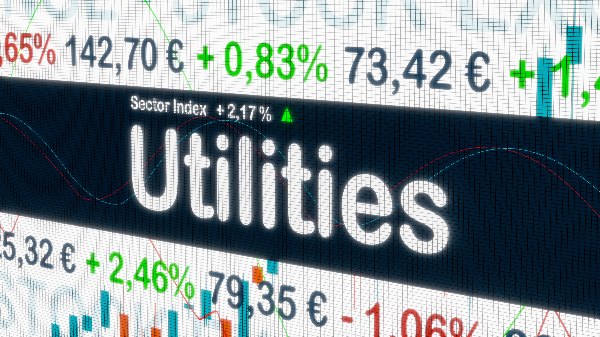






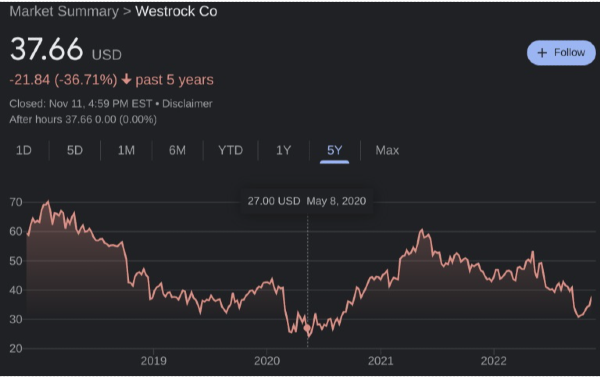

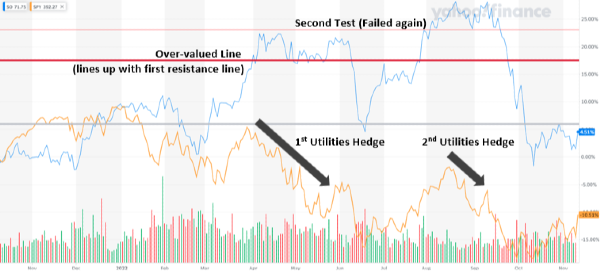


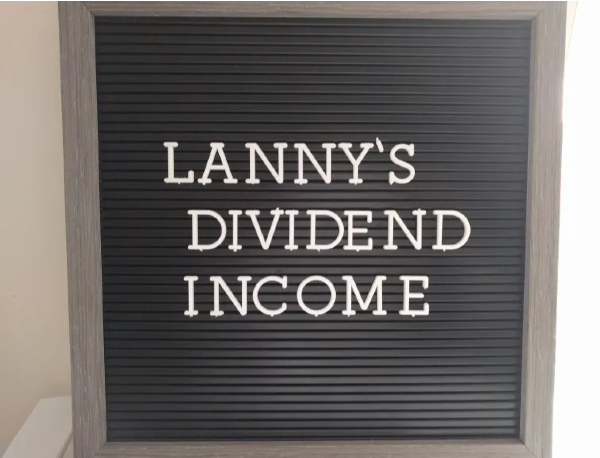

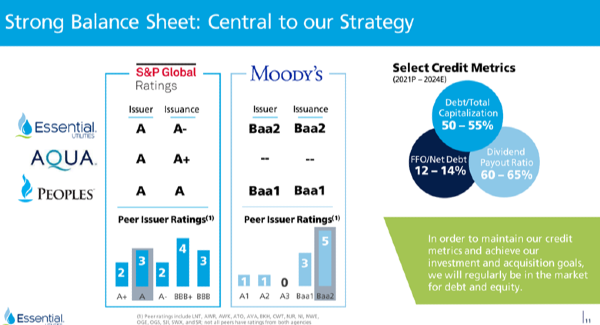









Overview: There are two themes today. First, there has been a modest bout of profit-taking on Chinese stocks (and yuan) after last week’s surge. Second, the ahead of the five G10 central bank meeting this week a series of market-sensitive economic reports, a consolidative tone is seen in most of the capital markets. Most of the large bourses in the Asia Pacific region fell, led by a 2.2% loss in Hong Kong and 3% loss in its index of mainland shares. Europe’s Stoxx 600 is giving back half of the pre-weekend 0.85% gain, while US futures are posting minor upticks after their slide at the end of last week. Benchmark 10-year bond yield are mostly 2-4 bp lower in Europe though the Gilt yields is off seven bp. Near 3.52%, the 10-year Treasury yield is off five basis points. It rose nine basis points last week. The US dollar is mostly softer, but the yen, Australian and Canadian dollars are struggling. Emerging market currencies are mixed. The South African rand, Philippine peso, and South Korean won are the underperformers, while the central European currencies and Mexican peso enjoy a modicum of strength. Gold is softer and is hovering around its 200-day moving average ($1791). January WTI is pinned near $70. The cold spell is seeing US gas jumped 11%, the most since the end of October and the fourth consecutive daily gain. Europe’s benchmark is moving in the opposite direction. It is off about 1.8%, its third consecutive decline. After rallying nearly 5% in the past two session, iron ore nearly 1.8% today. March copper is giving back last week’s 0.7% gain in full. On the other hand, March wheat has erased last Friday’s 1.6% decline.
Asia Pacific
The capital market is so much larger than the market for physical commodities that it can confuse observers. Last week, with the reserve data, China reported it bought 32 tons of gold. It sounds likely boat load, but the dollar value, we quickly estimated was around $1.65 bln. Does this really count as diversification out of the dollar, as some suggested, when the US Treasury data shows the PBOC owning $933.6 bln of US Treasuries at the end of September. Then, at the end of last week, after China's Xi visited Saudi Arabia the prospect of oil sales in yuan captured the imagination of some market participants as it does occasionally. Some trumpet this as the end of the so-called petrodollar. Many observers, in a rush to declare the dollar era over, thought when China launched domestic yuan oil contract that would signal the end of the greenback's reign. It did not. China is the biggest buyer of Saudi oil. On one level, it makes sense that it caters to its biggest buyer. Last year, China bought around $44 bln of oil from the Saudi's according to reports, which is less than $1 bln a week. If it were denominated in yuan, would it have impacted the dollar? Most likely not. It is relatively modest amount of money in the capital markets and for the dollar in particular. Consider that later today, the US Treasury will a sell a total of $171 bln of bills and notes.
Moreover, what seems to be lost on many observers, but businesses know full well, what is ultimately involved is shifting the currency risk. China, as a big buyer, want to shift the currency risk to the seller (Saudi Arabia). Yet, the dollar is the benchmark, and the Saudi riyal is pegged to the dollar. One implication is that when the Fed hikes later this week, the Saudi Monetary Authority will too. Yes, some oil producers have explored how tightly they need to follow the Fed to maintain their pegs but follow the Fed they will. In 2021, according to UN data, Saudi Arabia imported $30.2 bln of goods from China. Assuming all of that was conducted in yuan, which it most likely wasn't, it would still leave the Saudis accumulating yuan balances to what end? Over time, of course they could by more Chinese goods or financial assets. Since the end of last year, it would have cost Saudi Arabia about 8.6% to have accepted yuan of for its oil on an unhedged basis.
The dollar is trading with a firmer bias against the Japanese yen, even though US Treasury yields are a little softer. Nearby resistance is seen around JPY137.25, and even then, it would take a move above last week's high (~ JPY137.85) to signal anything important. The Australian dollar is trading inside Friday's range (~ $0.6745-$0.6815) is quiet dealings to start the week. It looks comfortable in a $0.6760-$0.6800 range. China reported slower lending figures for November, but the easing of vaccine and quarantine protocols made the data before it was released. China will stop using a mobile app starting tomorrow that has been used to track people's travel history. Profit-taking on Chinese shares (on the mainland and Hong Kong) was seen, and foreign investor selling was reported. The dollar gapped higher against the Chinese yuan after its rallying nearly 1.4% last week but remained below CN7.0. The gap is between Friday's high(~ CNY6.9625) and today's low (~ CNY6.9720). The PBOC set the dollar's reference rate ate CNY6.9565, the strongest since September 1. The median forecast in Bloomberg's survey was for CNY6.9553.
Europe
The UK is bracing itself for numerous public sector strikes in the coming days and weeks. The government will redeploy military and civil servants to cover for striking workers at air and seaports. Nurses, ambulance staff, railroad workers, postal workers and border officials are demanding higher pay.
Separately, the UK reported the economy bounced back after contracting by 0.6% in September with slightly faster than expected growth of 0.5% in October. The recovery was led by a 0.6% gain in services (the largest gain of the year) and a 0.8% rise in construction output (the best since May). There was also a strong improvement in trade (GBP1.785 bln deficit was the smallest since last December). Recall that September's economic activity has been weakened by the extra public holiday and period of national mourning after the Queen's passing. However, the data ought not to distract from the underlying weakness of the UK economy and the prospects that a protracted recession has begun.
The base case is for the ECB, BOE, and SNB to deliver 50 bp hikes this week. At the ECB, the market also wants to hear about the plans to unwind the balance sheet but last week's indication that banks will pay back 447.5 bln euros of TLTROs (long-term loans) on top of 296.6 bln last month, removes some of the sense of urgency. In addition, another nearly 52 bln euros of loans mature this month. Together these considerations will shrink the ECB's balance sheet by almost 800 bln euros. The ECB's balance sheet peaked in June around 8.835 trillion euros. Although much has been made in the press of the divergence between the hawks and doves at the Fed, which we think is exaggerated as we see no dissents, at the BOE the decision may be more fragmented. With economists projecting Swiss inflation to fall back below the 2% ceiling by the middle of next year, after this week's move, the SNB may be one more hike from its peak.
The euro is consolidating largely within the pre-weekend range (~ $1.0505-$1.0590). A break of $1.06 or $1.0440 is needed to signal a breakout. The intraday momentum indicators are stretched, warning early North American operators not to chase it higher. Sterling is also trading inside last Friday's range (~ $1.2210-$1.2325). Here, too, the intraday momentum indicators are stretched and there is risk to the downside in the North American morning. Initial support may be seen around $1.2250.
America
Ahead of this week's data and FOMC meeting, we share the following four observations. First, neither the data nor comments have had much impact on expectations for a 50 bp hike this week. For over a month, the implied yield of the Fed funds futures has traded in a five-basis point range (~ 4.345%-4.395%). It settled last week at 4.35%. Second, since the end of October, the expected terminal rate has fluctuated between about 4.85% and 5.14%. It settled at 4.96% before the weekend. Third, the market leans toward a peak in Q2 23. The implied yield of the June Fed funds futures continues to trade above the implied yield of the March contract. Since the end of October, the premium has traded between 10 and 24.5 bp. It finished settled last week at 18 bp. Fourth, the market continues to price in a cut in the target rate toward the end of next year. The implied yield of the December Fed funds futures contract has been consistently lower than the September contract. The implied December 23 yield has not been less than 25 bp below the September yield for over a month (since the October CPI release).
A busy week of data and the FOMC meeting begins off slowly with only the budget statement on tap today ahead of tomorrow's CPI report. The tightening of monetary policy is well known, but the extent to the fiscal tightening still seems under appreciated. Consider that in the first seven months of the fiscal year, the US recorded a federal deficit of about $795 bln. During the same period last year, the deficit was $1.234 trillion. Meanwhile, note that the government's spending authorization expires at the end of the and Congressional action is needed to avoid a partial government shutdown.
Canada has a light calendar this week. The Bank of Canada hiked rates 50 bp last week and signaled that its tightening cycle may be over. This week's data includes housing starts, existing home sales, and its monthly portfolio flow report. Mexico reports October industrial production figures today. Output may have slipped for the third consecutive month. Nevertheless, Banxico is widely expected to match the Fed's 50 bp hike the following day. Last week's inflation report showed the headline rate falling for the second consecutive month in November (7.80% vs. 8.41%). Although the core rate ticked up (8.51% vs. 8.42%), the biweekly report suggested it lost momentum in the second half of last month. Brazil left its Selic rate at 13.75%, where it has been since August. Separately, it saw IPCA inflation slow to 5.9% from 6.47%, its slowest since February 2021. Separately, Lula's cabinet is taking form, and former Sao Paulo mayor Haddad, as expected was named finance minister.
The US dollar is trading in the upper end of the pre-weekend range against the Canadian dollar and is nearly the middle of the session's range (CAD1.3625-CAD1.3675) in late morning dealings in Europe. There are options for about $310 mln at CAD1.3615 that expire today but may have been neutralized last week. Last week, the greenback reached a high of CAD1.3700 and a low around CAD1.3560. Choppy consolidative trading may continue. The greenback surged at the start of the last week to around MXN19.8640 and consolidated within the range set last Monday for the entire week. The low was carved Thursday and Friday in the MXN19.6060-MXN19.6135 area. Broad sideways trading is most likely near-term scenario. Similarly, look the for the BRL5.20-BRL5.30 to largely confine the dollar against the Brazilian real today.
Originally Posted on marctomarket.com